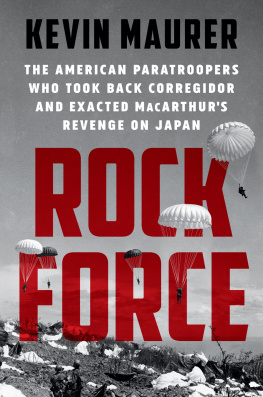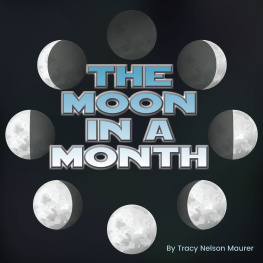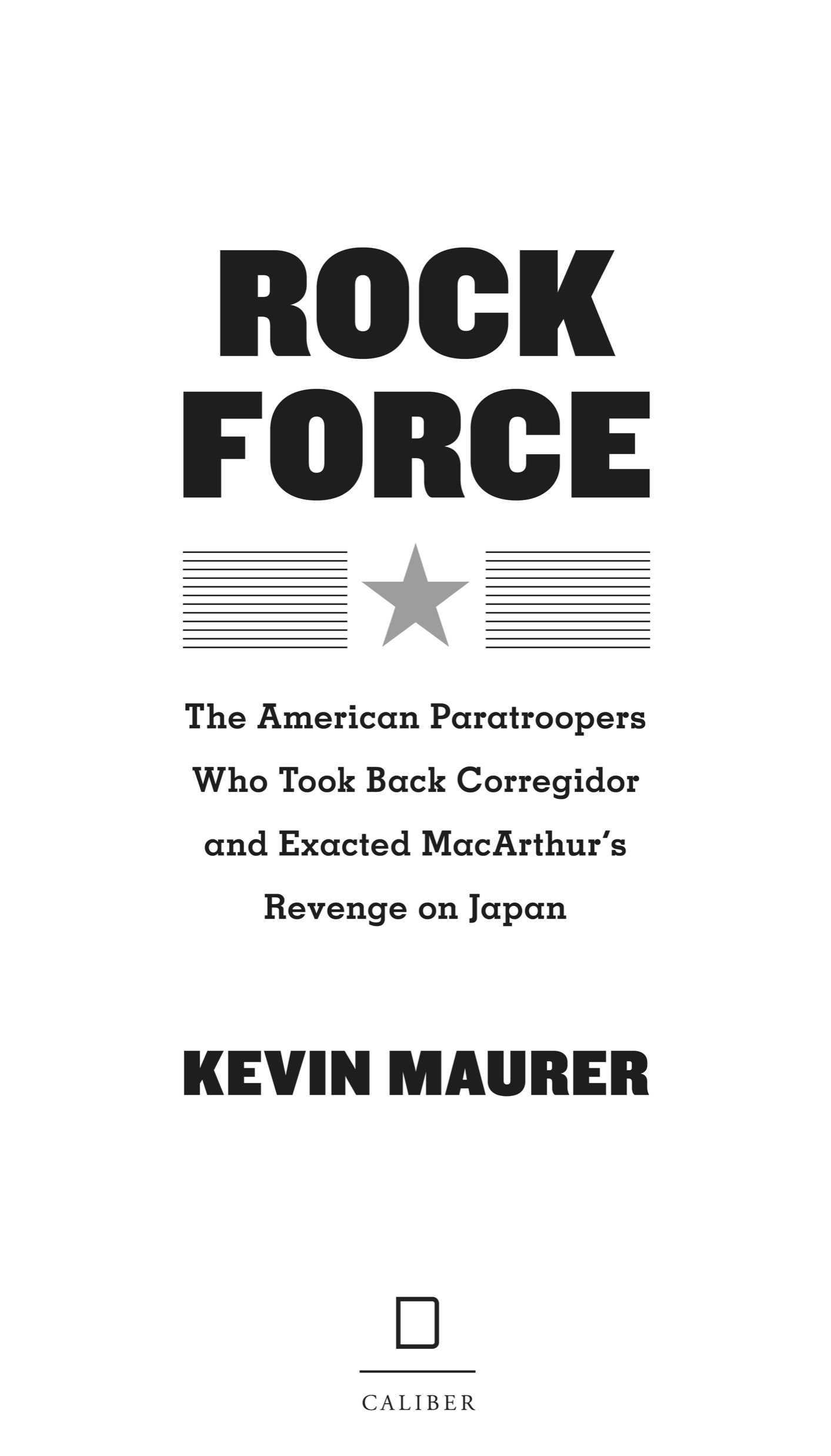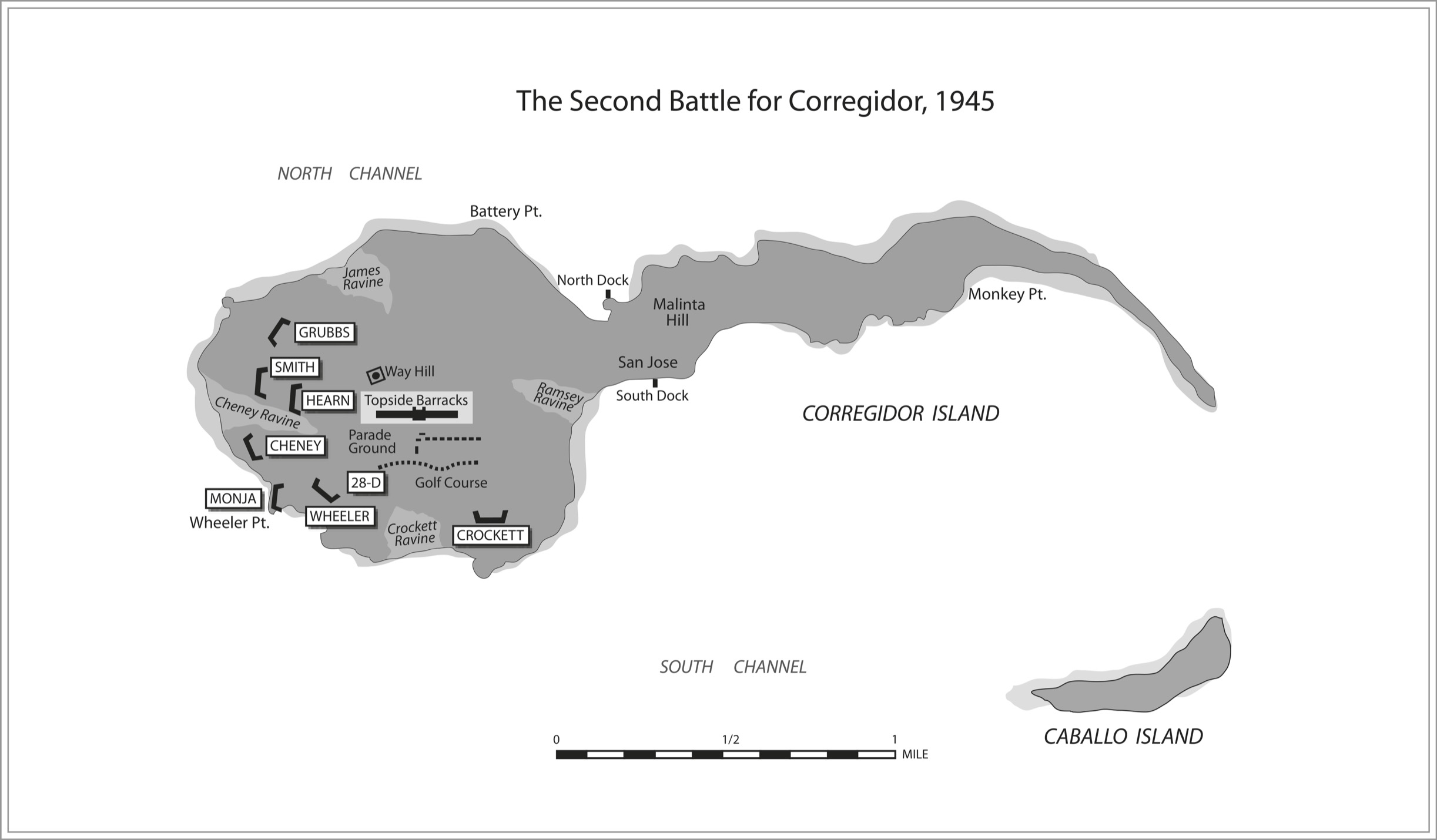The words J ap and N ip are racial slurs used by American soldiers during World War II to describe the Japanese. Soldiers in every war use slurs to dehumanize the men they are trained to kill, but that doesnt excuse their use. Both words appear in this book in quotes only because it offers a factually accurate depiction of how the soldiers spoke in 1945 at the height of the Pacific war.
Intrinsically, Corregidor is but a barren, war-torn rock, hallowed, as so many places, by death and disaster. Yet it symbolizes within itself that priceless, deathless thing, the honor of a nation. Until we lift our flag from its dust, we stand unredeemed before mankind. Until we claim again the ghastly remnants of its last gaunt garrison, we can but stand humble supplicants before Almighty God. There lies our Holy Grail.
G en . D ouglas M acArthur , May 1943
PROLOGUE
The Rock
Before it was a fortress, Corregidor was a volcano.
Born below the waves of the Pacific Ocean, the island slowly rose, one violent eruption after another, before it finally broke the surface, rising toward the morning sun. Layer after layer it grew, until it towered hundreds of feet above the water. Over time, the eruptions slowed, and the volcano sank. The magma remaining in the open air cooled and hardened. Then the waves went to work, smashing the sharp volcanic rock into soil and sand, life took hold. Brush and vines rooted into the barren brown land, repainting it a vibrant green against the blue sea.
The Spanish realized the importance of the island in 1570, when they saw it for the first time as they sailed into Manila Bay. Towering out of the water, it stood 589 feet above the surface at its highest point, its high, imposing cliffs choking with vines and trees. Stretching slightly more than four miles, with a long, narrow, whiplike tail, it was only a little more than a mile wide at most, tapering off gradually to a tip that looked out over the expanse of the bay.
After claiming the Philippine archipelago, the Spanish set a lookout and cannons on the small mountain at the head of the island so soldiers could signal Manilas defenses of an approaching enemy fleet. Then came a lighthouse for ships sailing in from the South China Sea. A customs station and a small fishing village followed. Soon, all ships heading to Manila stopped at the island so officials could check their papers, earning the island its name: Corregidor, which means magistrate or corrector in Spanish.
It wasnt until US Navy Commodore George Dewey led his squadron into Manila Bay and occupied the Philippines in 1898 that the island finally grew into a fortress. Deweys victory was part of the ten-week war between Spain and the United States, fought in both the Caribbean and the Pacific, and the American triumph signaled the end of the Spanish Empire and marked the United States first steps onto the world stage. At wars end, US interests spanned the globe, stretching from Puerto Rico in the Caribbean to Guam and the Philippine Islands in the Pacific.
The Americans saw Corregidor as more than a way station en route to Manila. The island became a sentry in the mouth of the bay on which they built Fort Mills in 1908. American engineers constructed enormous seacoast batteries atop the islands cliffs, decked out with heavy coastal guns riveted into huge concrete pits. The engineers designed the gun mounts so that they could be mechanically raised and then lowered between shots, disappearing behind thick concrete walls to protect them from naval fire. Besides batteries and fortifications, the engineers paved sixty-five miles of roads and trails, and laid nineteen and a half miles of electric railroad track used to move equipment and ammunition to the different batteries that dotted the head of the island, dubbed Topside.
Built as a weapon of war, Fort Mills was reputed to be one of the finest forts in the Far East, both in military might and in amenities. For the American troops stationed there, it had an electric trolley system for public transport, a movie theater, a baseball field, a parade field, a swimming pool, and a nine-hole golf course.
But Fort Millsbuilt on an ancient hunk of volcanic rock in the mouth of the bayhad grown into much more than a fort. It was a symbol of Americas might in the Pacific.
Until the Japanese arrived.
It was 1941 and the Japanese Imperial Army was on the march south with their sights set on Australia. Standing in their way was a ragtag force of American and Filipino soldiers under the command of Gen. Douglas MacArthur, the iconic general with his corncob pipe, neatly pressed uniform, and aviator sunglasses.















